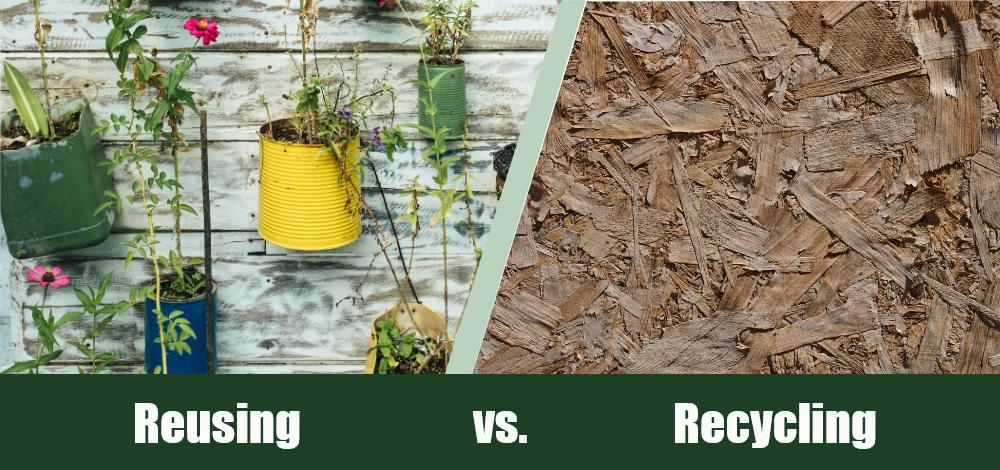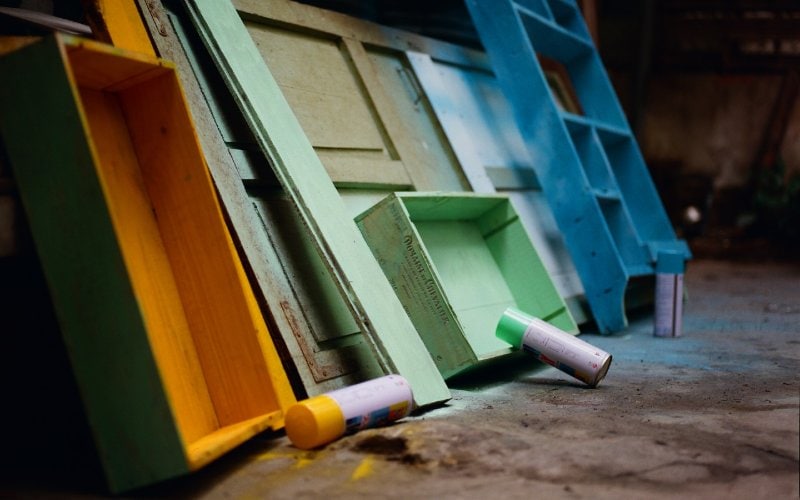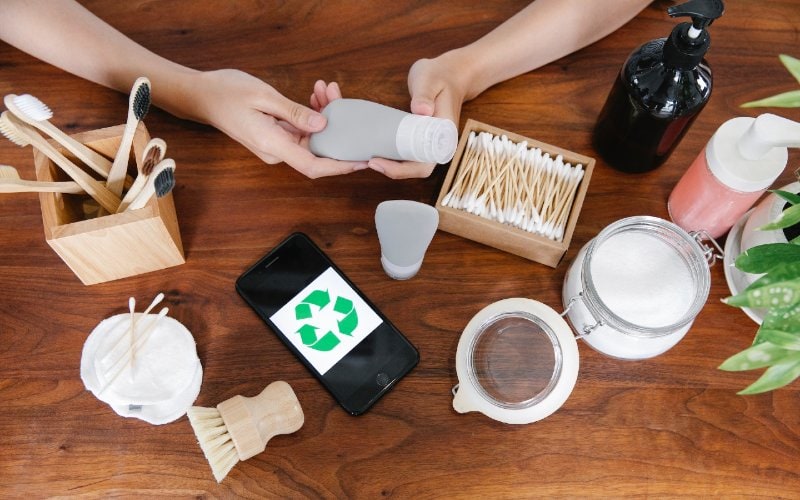Reusing vs. Recycling: Differences & Environmental Impact
-
Codee Chessher
- Last updated:

As awareness about the environment spreads, you’ve probably heard of the three R’s: reduce, reuse, and recycle. Reduce is fairly straightforward, but what do recycling and reusing entail? Which is better, and how exactly do you reuse and recycle products in your everyday life?
In this article, we’ve covered all the info you need to know about recycling and reusing. Let’s dive in below with the details.
Overview of Reusing

Reusing something can mean several different things. It may be using it for longer in its original form and function than intended or altering it for a creative use. For example, you can reuse old broken wood by painting it and nailing it into decorations or furniture. The most important part of reusing is that it doesn’t require extra energy.
Reusing can also mean searching for old, discarded objects and repurposing them instead of buying new items. This can range from dumpster diving, yard sales, auctions, and thrift stores. As the saying goes, one man’s trash is another man’s treasure!
An interesting thing about reusing is that it saves time and money compared to recycling. Unlike recycling, reusing doesn’t usually require a large supply chain or distribution chain, which slashes superfluous bureaucracy.
Unfortunately, reusing has its risks too. If items haven’t been well cared for, they could pose health risks. For instance, mold, heavy metals, chemicals, and other toxins. Always make sure items don’t have any obvious issues that could cause you or others harm before reusing them.

When to Choose
Reusing is typically only a feasible option when the item is still in good condition, but it’s sometimes possible to alter damaged or worn objects. In that case, you’re actually adding extra value to the item! If items are totally destroyed, reusing likely isn’t an option and you should look into recycling.
Environmental Impact
As we briefly mentioned, reusing doesn’t require energy, so that means it has little to no effect on the environment. Reusing isn’t always an option, though, so reusing by itself only goes so far. That’s where the other R’s come in—reduce your consumption and waste when possible, and recycle what isn’t reusable. Reusing works best in concert with other environmentally-conscious practices.
- Can add value to objects
- Reusing takes numerous forms
- Only limited by what you can find and what you can use
- Doesn’t require energy to reuse objects
- Not all items are suitable for reuse
- Some items may pose health risks
- Too much reusing can crowd your home
Overview of Recycling

Unlike reusing, recycling takes materials and breaks them down to be made into new products. Recycled content makes up more and more of the items in our day-to-day lives, like paper and plastic bags. Not all materials are recyclable and have to either be reused or thrown away to languish in a landfill. The good news is that many of the materials we use are recyclable. A few examples you’re probably familiar with include plastic, paper, glass, cardboard, and aluminum.
Recycling is both more complex and less efficient than reusing. Recycling requires a large infrastructure, from you putting your recycling on the curb, to the driver transporting it to a recycling facility, and beyond. Materials are broken down into a rawer form and sold to manufacturers to make new products at a fraction of the original monetary and energy cost. A big positive benefit from this, though, is that the recycling industry employs more than 24,000 people in the US alone, with a steady upward trend as the need for more recycling workers rises.
In a way, recycling has both a wider and narrower scope than reuse. All you need to do is turn recyclables into recycling centers, but there’s no creative repurposing like reusing stuff. However, the industry behind recycling produces a lot of waste and contributes to greenhouse gas emissions, unlike reusing.

When to Choose
Recycling is the go-to choice for materials you have no use for, like glass bottles, aluminum cans, and cardboard boxes. If the item would have been reusable but is too worn or damaged, recycling is always an option too. Honestly, you’ll probably be recycling a lot more than you reuse simply because recycling actually saves space in your house.
Environmental Impact
Recycling isn’t nearly as good for the environment as reusing, putting out emissions to transport, break down, create new products, and sell them. However, recycling operates on a bigger scale that’s primarily designed to cut down on manufacturing costs and limited natural resources. For instance, recycling plastic prevents oil from being released into the environment and reduces the strain on plastic production. As we know, plastic comes from oil, which is a nonrenewable resource that harms the planet and the atmosphere.
- Greater potential to preserve natural resources than reusing
- Employs tens of thousands of people
- Saves energy in manufacturing industries
- Slows GHG emissions
- Contributes to pollution
- Not all materials are suitable for recycling
- Easily disrupted when the wrong materials are sent to recycling centers
Conclusion
Reuse and recycling are both essential parts of the 3 R’s, with reuse the best choice for items in good, usable condition. Recycling is better for most of your household waste, like glass, plastic, and cardboard. While neither is perfect, they both help minimize your impact on manmade climate change from greenhouse gas emissions.
- You might also like: What is Cocobolo Wood? Properties, Characteristics, & Uses
Featured Image Credit: (L) Reusing – Bernard Hermant, Unsplash | (R) Recycling – Engin Akyurt, Pexels
Contents
